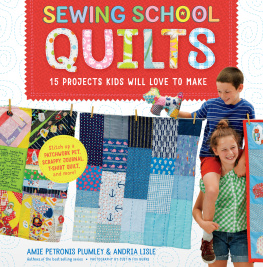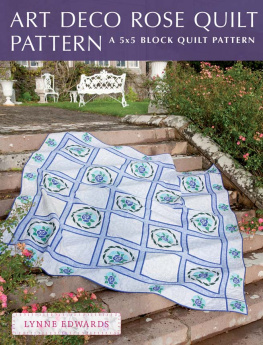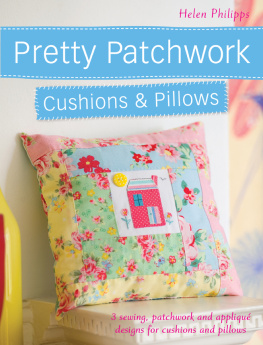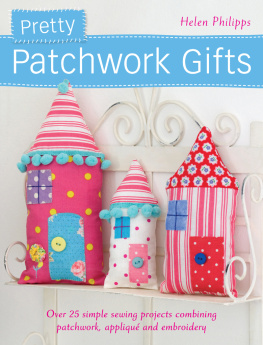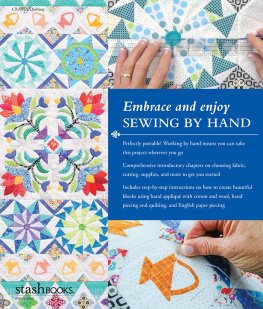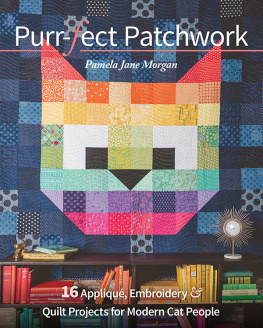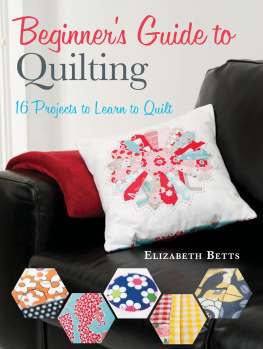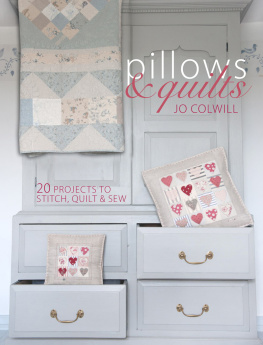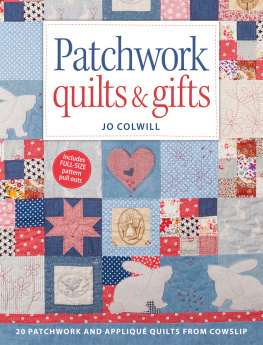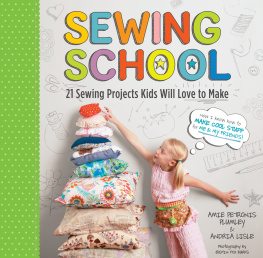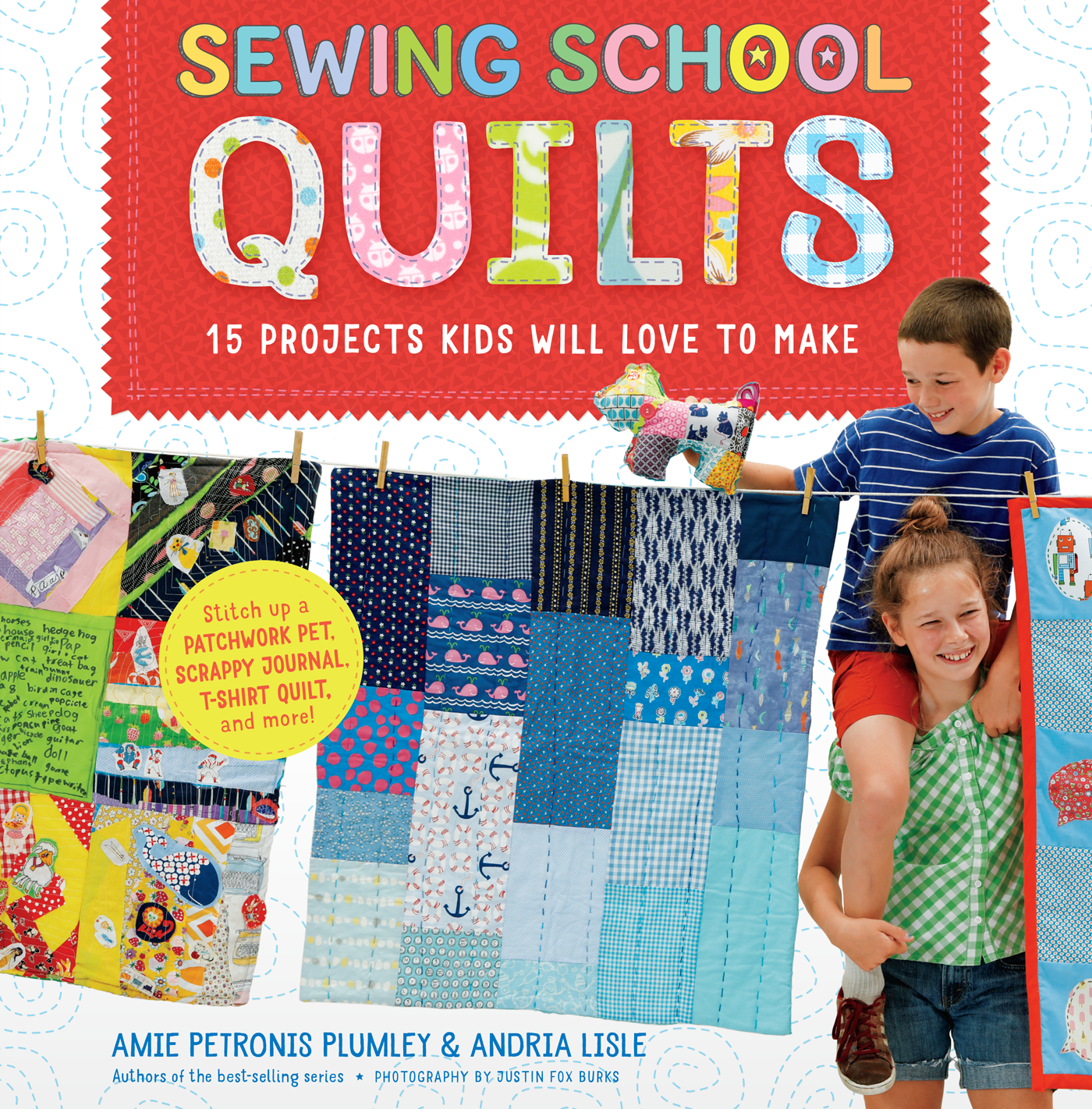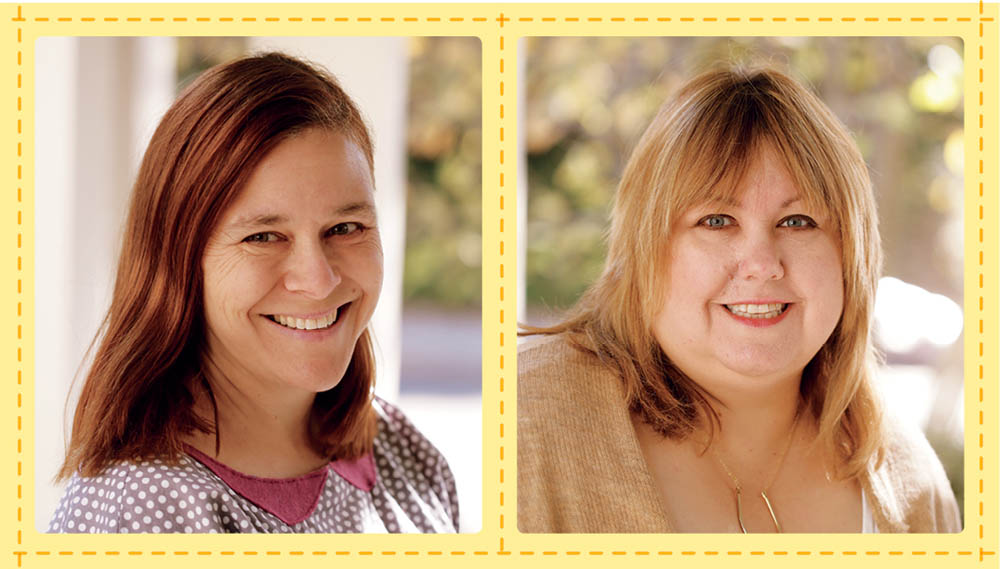Dedicated to the next generation of quilters, especially Frank, Phoebe, Maclin, Wilson, Arthur, Amelia, Calliope, Catherine, and Rumyana
Acknowledgments
Once again, we are grateful to have the support of Grace-St. Lukes Episcopal School. Hugs to all the wonderful campers, students, teachers, parents, and administrators who have helped make our dream a reality. Special thanks to Thor Kvande, Tom Sauter, Emily Sammons-Merrell, Brooke Shannon, Libby Shannon, Jill Beaumont, Lily Thompson, Sara Ralston, Kimberly White, and Jan Willis.
We cannot thank our friends and family enough for their support and love: Eric Plumley for legal advice and allowing us to take over the house with quilting and photo shoots; Phoebe and Frank for providing endless inspiration, creativity, and smiles; Betty Lisle for the encouragement, and Jeff, Mary Ann, and Maclin Lisle for being so enthusiastic about each book; Amy Lawrence for always having lunch ready after a long morning of photo shooting; Darla Ives for piecing and quilting a beautiful Say Anything Quilt; Carrie Bloomston for sharing her amazing fabric with us; Stanton Thomas for the fabric scraps; Hattie Childress for teaching us the endless possibilities of quilting; and Erin Harris and the Carpenter Art Garden for inspiring the Scrappy Journal project. We are grateful that Grace-St. Lukes Episcopal Church, the Touliatos family, and Sew Memphis allowed us to use their beautiful spaces for photo shoots.
This book would not be possible without our dedicated agent Linda Roghaar and the amazing team at Storey Publishing, including Deborah Balmuth, Michal Lumsden, Alee Moncy, Jennifer Travis, and Jessica Armstrong. Thanks also to Sarah Chapman for her top-notch copyediting.
Lastly, we want to thank the amazing readers of Sewing School and Sewing School 2 whose enthusiasm and love of sewing has inspired so many new projects and ideas. Without you, this book would not be possible. We cant wait to see how you make the projects in this book your very own!
Contents
A Note to You from the Authors
Hi! We are thrilled that you picked up this book. When we were kids like you, we loved to sew and we wish that wed had a book to teach us how to quilt like the older sewers we knew.
When Amie was a little girl, she would observe as her mom made all kinds of things on her sewing machine. Once Amie got a little bit older, her mom taught her how to use a sewing machine all by herself. Soon, Amie was making her own clothes and fun things for her room! After she graduated from college, she got her own sewing machine. And she has never stopped sewing since.
Andria also grew up watching her mama sew. Her favorite Christmas memories are of the bears and dolls her mother painstakingly sewed for her to play with. One year, Andria found a funny little sewing machine under the tree. Instead of needle and thread, it had a sticky glue cartridge to glue fabrics together. After practicing on the toy machine, she moved on to her mamas sewing machine. She began making stuffed animals and clothes for them to wear.
Now that Amie and Andria have grown up, they sew all the time. Amie has two children of her own, Phoebe and Frank, who like to sew plus a school full of kids who love to learn from her. She even has an after-school sewing club for her students. Andria is a curator of public engagement. She often works textiles and sewing projects into her programming ideas. She still hasnt learned how to sew clothes, but she uses her sewing machine to make unique pillows and curtains for her home.
If youve read either of our two previous Sewing School books, you know that we like to use our free time to teach children how to sew. Throughout the years, weve noticed that the kids we sew with want to create their own fabric by making patchwork pieces. They are always trying to understand how to sew scraps of fabric together to make one big piece. They want to quilt, but stuff happens: the fabrics fall apart where they were sewn together or the kids get frustrated by the long process of piecing it all together.
So in the summer of 2016, we held our first Quilt Camp. In just one week, dozens of eager sewers made smaller projects that could be finished in less than a day, and they worked on bigger quilts that took several days to make. These sewers tested every project in this book so that you can learn how to quilt, too.
Writing this book was very important to both of us. We both have quilt collections in our homes, and every time we pull out a well-loved quilt from a basket or linen closet and use it to wrap up in when were sick, tired, or cold, we feel like were getting a great big hug from the person who sewed it.
We hope that you will enjoy quilting as much as we do. Remember to stay patient as you sew. There are some projects in this book that can be made quickly, but a quilt that you will be proud of will take a longer time. Dont give up! Carefully follow the detailed steps, and we are confident that you can make anything in this book.
Happy Quilting!
Amie Petronis Plumley & Andria Lisle
About this Book
An Introduction for Adults
Sewing School Quilts offers young sewers the opportunity to explore their own creative instincts within the parameters of a traditional art form. The book uses step-by-step directions, simple language, and child-created examples of contemporary sewing projects to teach five different quilting styles to children ages 8 and older.
The projects teach young sewers how to finesse the skills taught in previous Sewing School books and create large-scale projects with important family meaning. Sewing School Quilts uses the developmental cues established by Montessori and Waldorf teaching methods as a base to employ STEAM (Science, Technology, Engineering, Arts, and Mathematics) skills that are so important for twenty-first-century learners. Just as with STEAM philosophy, the content in this book is interwoven and layered, immersing young sewers into a learning process where they can work across disciplines and apply new skills as they imagine and create personally meaningful work.
Most children learn by doing. While the concept of an array may seem foreign, laying a quilt out in a 5 x 4 grid makes sense. While working on a project, young sewers are thinking about the task at hand, not geometry, taking measurements, and basic addition, subtraction, and multiplication skills; however, these skills all come into play during the quilt-making process. And its not just math: storytelling plays a role, too. So do design skills and critical thinking strategies such as planning, troubleshooting, and turning mistakes into opportunities. As young sewers become more adept, they also learn about the mechanics and engineering of a sewing machine.

